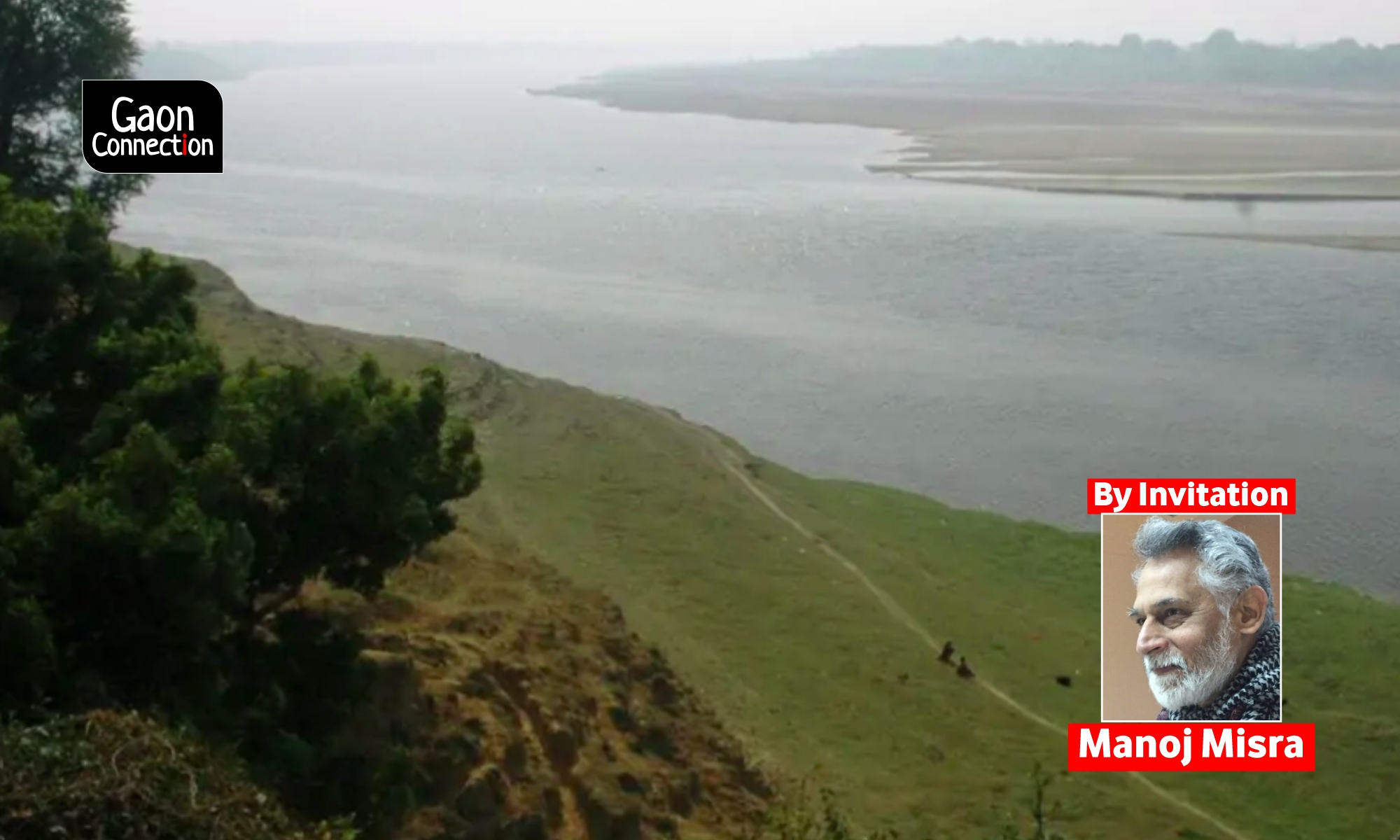River banks thrum with life and stories. The living and the non-living; the slow and the fast-moving; and ever-changing views and sounds. As for the stories, they are plausible, profound and even fantastic.
A story from a riverside village goes thus. When the river once flowed distant and a smaller channel skirted Kanchanpur village, there was a banyan tree. It grew a branch that was long and sturdy and reached the other bank. The villagers used it as a bridge, and the village got a new name — Ikdala (ik: one, dala: branch). Now, it is one of the many villages that dot the meandering, ravine-scarred lower reaches of the Yamuna River. It also has an active Nadi Mitra Mandali (NMM).
By the time the Yamuna makes it to Ikdala in the Fatehpur district of south Uttar Pradesh, it has already received ample tributes from the Chambal, Sindh, Betwa and Ken rivers and hence is healthy enough to host a wide variety of riverine biodiversity including the majestic Gangetic Dolphin, the recently declared national aquatic animal. Another 100 kilometres downstream and the Yamuna is ready to merge itself into the Ganga at Prayag (Allahabad).

Ikdala sits high over a wide meander of river Yamuna and enables a majestic view of the river from a lookout.
How we landed in Ikdala is another story. Suffice it to mention that Jaykant and his friends took eagerly to the idea of establishing a Nadi Mitra Mandali. While familiarizing ourselves with the village, villagers and its environs, the ‘lookout’ which is actually a portion of an eroded deep ravine standing high over the river caught our eye. An excited yell “Sir, Dolphin” from Dr Sitaram Taigor, a Chambal expert and the project’s field executive confirmed the strategic usefulness of the site. Soon we had sighted not just one but three dolphins frolicking as only a dolphin can in the copious Yamuna waters. The meander had created a deep pool that dolphins prefer. In due course a dolphin watch centre was developed at the site and has since become quite popular with local people and tourists.

Most villages with a history come up with interesting sites and anecdotes. Ikdala true to form has a temple dedicated to Panchdev (Surya, Vishnu, Ganesh, Durga and Ardh-nareswar) with an idol of ‘Surya’, reputedly carved of the same stone and from the same period as the famous Konark temple (13th century) in Odisha.

There is an ancient crumbling wall nearby, belonging to some long-gone structure. In a much-dilapidated condition now, it was reported to have been connected somehow (the story seems to have lost much of its details) to Raja Birbal, a wisecrack and one of the nav ratnas (nine jewels) at the court of Akbar, the powerful Mughal emperor in the 16th century. All that people recall of the story now is that the village or what it was in an earlier avatar, was Birbal’s nanihaal (maternal home).

Ikdala hosted a workshop on “biodiversity conservation” for the NMMs. Villagers from NMMs as diverse as Uttarakhand, Haryana, mid Yamuna Uttar Pradesh and Madhya Pradesh were astonished to not only find a healthy Yamuna, frolicking river dolphins (that they had only heard about) but also to meet Dr Thakur, MBBS.
Mahesh Thakur is a much revered elder in the village. A physician with an MBBS degree from a medical college in Kanpur, whence the current union Health Minister, Dr Harshvardhan was his batch and roommate, he chose to honour the word given to his father to serve the poor and the deprived in and around his village. This is when he was born and brought up in what was then called Bombay, where his father was a businessman and wherefrom he graduated before turning to study medicine.
Some forty years ago newly married and armed with a medical degree, he set up his practice at Ikdala, his native village and continues to this day to serve relentlessly, notwithstanding the risks of COVID and his advanced age of seventy years. Thakur recalls that in those days, there was no electricity in the area. Roads were in hopeless condition and people believed far more in local medicine men and home remedies than a doctor with a fancy degree. He rode a bicycle with a jhola (hand bag) and travelled to larger cities to procure the required medicines which were hard to come by in nearby towns. There is a lot more but rather than me singing paeans to Dr Thakur, it would be good if say “GaonConnection”, “theBetterIndia” or some such locators of unsung heroes were to discover him for the nation.
That Jaykant is Dr Thakur’s son was good enough reason for us to support him and the team that he was a part, without any reservations.

Today some eight years down the road Jaykant and his colleagues in the Nadi Mitra Mandali – which has since grown into a registered NGO – have made quite a name for themselves in the region, having ventured into activities like promotion of sanitation, natural farming, coarse grains, solar power and the Swachh Bharat Mission.
Felicitations from various quarters have come their way perhaps as a result of blessings received from the Yamuna and the dolphins that they continue to watch and protect, no matter what.


















